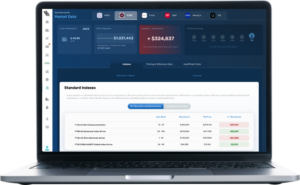Latest Substantive Research study reveals some buy side firms are paying almost three times more than peers, for identical levels of service and access from the same providers
- Some large asset managers are paying 190% more than others for comparable investment research services from the same broker, with the average difference at 70%
- Some smaller asset managers are paying 160% more than others for the same levels of service and access from the same broker
- Bulge bracket and premium research-driven brokers have more inconsistent pricing of identical services – their average range is 60%, as opposed to 49% for niche sell side firms
London, 5 December 2023: Substantive Research, the research discovery and research spend analytics provider for the buy side, today publishes its latest study into the investment research market, which reveals opacity and extremely inconsistent pricing by research providers.
Background – MiFID II, Six Years on
The FCA is currently scrutinising the recommendations from Rachel Kent’s recent UK Investment Research Review, ahead of the regulator implementing new rules next year.
The Kent Review recommended a softening of the rules, to allow for the option to “rebundle” research costs with execution costs, reversing a key element of MiFID II and giving asset managers the option to shift research costs back onto their end investor clients more easily.
2018’s unbundling rules have stimulated a much stronger focus on the value and cost of research. This focus is likely to continue after new optionality on research funding is implemented next year.
As the industry eagerly awaits the new guidance from the FCA (expected to be published in the summer of 2024), key questions will concern the effect potential new freedoms have on the supply and pricing of broker research.
Study Findings
Substantive Research’s latest study shows that the current investment research market has still not found consistent and transparent pricing, some buy side firms are paying almost three times more than peers, for identical levels of service and access.
- For the largest asset managers research pricing and payments for comparable research services are extremely inconsistent, with some asset managers paying 190% more than others for the same levels of service and access from the same broker, with the average difference at 70%
- For the smallest asset managers that pay more modest amounts of money to brokers, research pricing is less inconsistent within their peer groups, but still variable – some small asset managers are paying 160% more than others for the same levels of service and access with the same broker, with the average difference at 45%
- Bulge bracket and premium research-driven brokers are more inconsistent pricers of identical levels of service compared with their smaller peers covering niche sectors or countries and regions. The average range of inconsistency for bulge and premium brokers is 60%, as opposed to 49% for niche sell side firms.
A modest range of different pricing would not necessarily indicate an inefficient market – there are established reasons why asset managers pay different amounts for the same levels of service from their research providers. Paying for the qualitative value received in the eyes of their portfolio managers is a standard and popular approach used by asset managers using a ‘broker/research vote’.
Paying ex post means firms can assess how important the research has been for their investment decisions that previous year, half-year or quarter, and by doing so they incentivise their research providers to service them well and produce quality analysis over the next period of time. Other asset managers simply pay using a rate card for services consumed, so more analyst interactions mean higher payments to those providers.
Savvas Tachramanis, Head of Research Spend Analytics at Substantive Research, said: “The opacity of pricing in research means that it can be almost impossible for buy side firms to understand how their payments compare to peers for like-for-like services with exactly the same providers. Asset managers (whether broker vote or interaction rate card driven) that may want to reward a particular provider 20% or 30% above the street in order to be prioritized by their analysts are actually often paying double or triple for no additional benefit. And also brokers dealing with these ranges, driven down on the low end by MiFID II, will find it challenging to run their businesses with so much disparity in these payments.”
Mike Carrodus, CEO of Substantive Research, said: “Paying more than your peers can be a good decision, ensuring that you get an early phone call when markets or particular assets are in flux. However the pricing ranges we observe for identical access and supply are so large that they exceed any potential benefit, as providers are simply not set up to service clients above a certain payment threshold. Asset managers can use that money so much more effectively with other providers, or for bespoke research and high demand alt data. The research budget needs to be optimised.”
Could the new proposed regulatory freedoms from HM Treasury return us to “the bad old days” of over-supply and unscrutinised payments for research, and exacerbate this inconsistency?
It would be hard to imagine a buy side firm succeeding in convincing a pension fund client to have these costs returned to them without providing a number of assurances on the transparency and efficiency of how this money would be spent. Rachel Kent’s review went as far as to recommend that asset managers also “periodically undertake benchmarking or price discovery in relation to the research that the firm uses”. So it’s possible that the new research funding optionality, instead of removing transparency, could actually drive more of the industry to combine internal value assessments and supplier benchmarking, moving the market towards clearer agreements and more consistent pricing and payments.
Mike Carrodus, CEO of Substantive Research, concluded: “The devil will be in the detail of the FCA’s new rules next summer, but one surprising outcome could be that more asset managers are negotiating their research agreements from an even greater position of understanding of research pricing and supply. Active managers are dealing with challenges both from a cost control perspective as well as pressure on fees from clients, so whether the research-funding dollars come from their own P&L or their client base next year, a deeper understanding of how their payments compare to peers would be welcome either way.”
Universe of survey data:
60 asset management firms, 60%/40% Headquartered Europe/North America, Total AUM represented $14tr+, 70%/30% Long-only/Hedge Fund.
In Market Data, Transparency Matters – See How We Can Help
Learn more about Substantive Research industry first apples-to-apples market data price benchmarks for market data procurement professionals across index providers, rating agencies, pricing and reference data, research/analytics and ESG.

Too Much Research And Not Enough Time? We Can Help
With access to more than 250 research providers globally, across all asset classes, Substantive Research is a research aggregator with a difference. Our experienced team of curators filters and selects only the highest quality research, tracks the most relevant themes, then tags them in an intuitive manner. Another key difference between Substantive and other research aggregation platforms is that we pre-permission access to all of the research for you. For more visit our Research Discovery service below.









